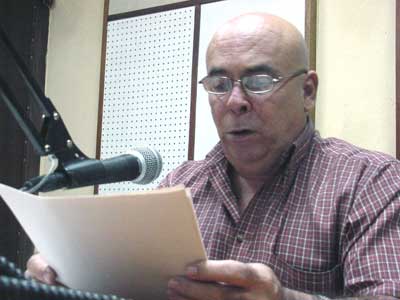Through language and sound signals are structured messages, ie ideas published to the public. Tools or radio elements have in the elementary message Order one denotative function; seen only in this way the message devoid of life, which is to be inferred that unemotional.
This requires the connotative function as an additional reflection of “what the sender says” about the idea; his “relationship” with the idea itself. To the extent that the connotative function is correctly encoded through the message, decoding will be directly proportional.
In the connotative function remain implicit personality, mood, outlook and temperament of those who make the idea. The denotative and connotative are complementary and interdependent to complete the sense of the messages and their effectiveness; in the functional symbiosis objectivity and subjectivity are articulated; knowledge and affection expressed about the idea.
The ideas expressed by articulate sound – the words-are incomplete if they lack the paralinguistic factor.
The paralinguistic is conceived as a subcomponent of articulate speech; messages are meaningless without him. The radio is a must, since the transmission of ideas through audio messages visually lacks the element reduces the possibility that receivers capture the elements of nonverbal language. In this case the subcomponent paralinguistic intended to “communicate”, “make known” the intentionality of thought turned-message.
The dialogues; nuances of language according to the geoculture of origin; profession who communicates; family status; age; level of education and social position, are represented by a specific language supplemented with the character, mindset and accept that surrounds him; this does not mechanically, but filtered through personal experience, temperament and psychology.
Under no circumstances, any of these elements has supplementary character – that would substitute or exclude – but complementary and enriching for their completion of the essence and purpose of each message function.
The paralinguistic includes several elements that define it, ranging from the tone of voice, volume and intensity; the speed with which the message is communicated; tone of voice and intonation, syllabic emphasis and including aspects such as fluency, joy or sadness and respiratory rate with which each message is issued.
When the paralinguistic subcomponent evidences clearly and precisely, the intent of the message is perceived accurately. It is important to know how to properly control and build what paralinguistic, as it somehow always be disclosed; any errors or inaccuracies to build it can distort the nature and purpose of what is communicated. Not knowing its usefulness and possibilities leads to wrong interpretations of the messages.
Another subcomponent paralinguistic what lies in pragmalinguistic – inherent in the philosophy of language and psycholinguistics and common knowledge of the speakers. Here we return to the codes, the common acceptance is essential to understand the message with optimum effectiveness condition.
Translated by: Daysi Olano





